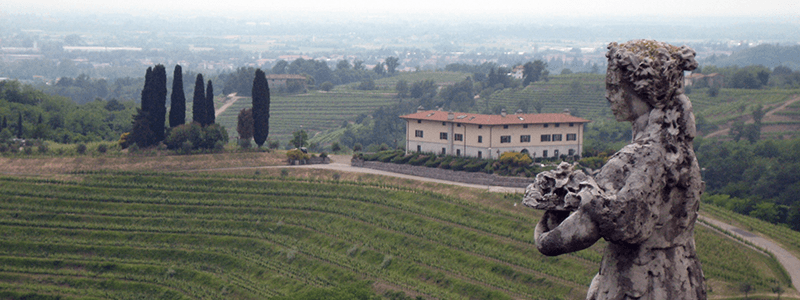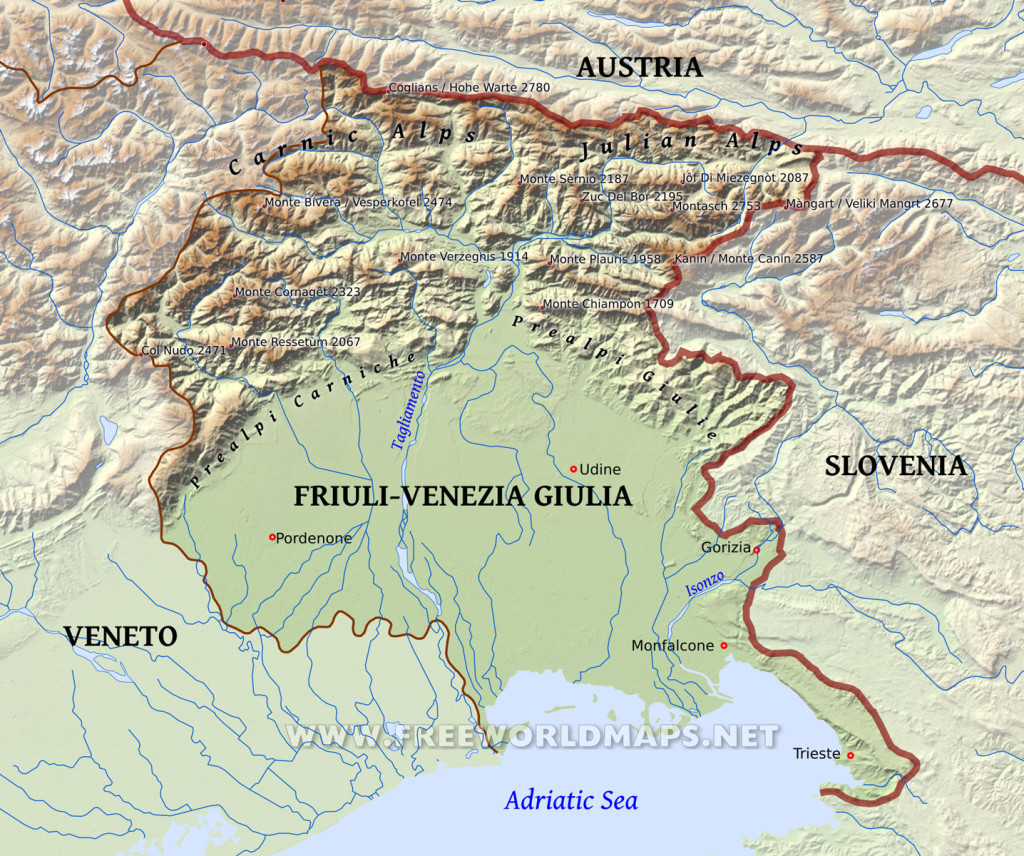
The Region of Friuli-Venezia Giulia is one of Italy’s most fascinating and diverse regions, offering a unique blend of Italian, Austrian, and Slavic influences. Unlike the quintessential Italian landscapes of Tuscany or Lombardy, Friuli-Venezia Giulia is a mosaic of cultures, landscapes, and traditions, shaped by its rich history and strategic location between Western Europe and the Balkans.
From the Adriatic coastline and Venetian-style towns to the rugged Alpine peaks of the Carnic and Julian Alps, this lesser-explored region is an ideal destination for history lovers, outdoor adventurers, and food enthusiasts.
A Complex History: The Many Identities of Friuli-Venezia Giulia
A Region Shaped by Empires
Friuli-Venezia Giulia has been influenced by numerous civilizations, each leaving its mark:
- Romans – Established the major city of Aquileia, once the fourth-largest city in the Roman Empire.
- Huns, Lombards, and Venetians – The region was often caught between warring powers.
- Habsburg Austria – Trieste became the Austro-Hungarian Empire’s main port, shaping its Central European character.
- World Wars and Border Changes – The region was heavily impacted by World War I battles and territorial shifts between Italy, Yugoslavia, and Austria.
A Cultural Crossroads
Today, Friuli-Venezia Giulia maintains its distinct identity, with three official languages—Italian, Friulian, and Slovenian—and unique traditions that set it apart from the rest of Italy.
Top Cities and Towns to Visit in Friuli-Venezia Giulia
Trieste – The Central European Italian City
Trieste, the regional capital, feels more like Vienna or Ljubljana than Rome. A former Habsburg port, it has a unique mix of Italian, Slovenian, and Austrian heritage.
Must-See Attractions:
- Piazza Unità d’Italia – One of Italy’s most beautiful squares, opening onto the sea.
- Miramare Castle – A stunning 19th-century castle, once the home of Archduke Ferdinand Maximilian.
- Canal Grande & Serbian Orthodox Church – Reflecting Trieste’s multicultural past.
- Caffè San Marco – A historic literary café where James Joyce once wrote.
Udine – The Venetian City of Friuli
Udine is the cultural heart of Friuli, featuring Venetian-style palaces, elegant piazzas, and excellent museums.
Top Attractions:
- Piazza della Libertà – A mini-Venice with Renaissance and Gothic architecture.
- Udine Castle & Art Gallery – Houses paintings by Tiepolo, one of Venice’s greatest artists.
- Osterie and Wine Bars – A great place to experience authentic Friulian cuisine and wines.
Gorizia – A City Divided by History
Gorizia, once a border town between Italy and Yugoslavia, is now a symbol of unity. It shares a border with Nova Gorica (Slovenia), and together, they will be European Capital of Culture in 2025.
Things to See:
- Gorizia Castle – Offers panoramic views of the Italian-Slovenian border.
- Great War Museum – Showcasing WWI battles fought on the Carso Plateau.
Cividale del Friuli – A Lombard Treasure
A small town with deep medieval and Lombard roots, Cividale del Friuli is a UNESCO World Heritage Site.
Top Attractions:
- The Devil’s Bridge (Ponte del Diavolo) – A dramatic bridge spanning the Natisone River.
- Lombard Temple (Tempietto Longobardo) – One of the best-preserved Lombard monuments in Italy.
Roman and Early Christian Heritage in Friuli-Venezia Giulia
Aquileia – The “Second Rome”
Once a major Roman city, Aquileia is home to some of Italy’s most important ancient ruins.
Must-See Attractions:
- Basilica di Santa Maria Assunta – Features stunning early Christian mosaics.
- Roman Forum & Archaeological Museum – Showcasing statues, inscriptions, and artifacts.
- The River Port Ruins – A glimpse into Aquileia’s role in ancient Mediterranean trade.
Coastal Beauty and Seaside Towns
Grado – The “Sun Island”
Grado is a charming lagoon town, known for its thermal spas and sandy beaches.
Highlights:
- Historic Center – A Byzantine-Venetian old town with winding alleys.
- Grado Lagoon – A paradise for birdwatchers and boat excursions.
The Carso Plateau and World War I History
The Carso Plateau, a limestone region near Trieste, was the site of fierce World War I battles.
Top Sites:
- Redipuglia War Memorial – A massive ossuary with 100,000 soldiers.
- Oslavia & Monte San Michele – Features WWI trenches and war relics.
Outdoor Adventures: Mountains, Skiing, and Hiking
The Carnic and Julian Alps
Friuli-Venezia Giulia is home to stunning mountain landscapes, perfect for hiking, skiing, and adventure sports.
Best Outdoor Destinations:
- Forni di Sopra & Tarvisio – Excellent for skiing in winter and hiking in summer.
- Lago di Fusine – A breathtaking alpine lake near the Austrian-Slovenian border.
- Monte Lussari – A panoramic pilgrimage site, accessible by cable car.
Friuli-Venezia Giulia’s Food & Wine: A Culinary Delight
The region’s cuisine is a fusion of Italian, Austrian, and Slavic flavors, creating one of the most diverse food scenes in Italy.
Must-Try Dishes in Friuli-Venezia Giulia
- Frico – A crispy cheese and potato dish, unique to Friuli.
- Jota – A hearty Slovenian-style bean and sauerkraut soup.
- Brovada e Muset – A traditional dish of fermented turnips and sausage.
- Gubana – A spiral-shaped pastry filled with nuts, raisins, and grappa.
Friuli-Venezia Giulia’s Best Wines
The region produces some of Italy’s finest white wines.
- Friulano – A refreshing white wine with almond notes.
- Ribolla Gialla – A light and citrusy wine, perfect for seafood.
- Refosco – A bold, red wine with hints of dark berries.
Getting Around Friuli-Venezia Giulia
Public Transport
- Trains – Connect major cities like Trieste, Udine, and Gorizia.
- Buses – Serve smaller towns and mountain regions.
Best Way to Explore?
A rental car is recommended for reaching hidden villages, mountains, and wineries.
Why Visit the Region of Friuli-Venezia Giulia?
Friuli-Venezia Giulia offers:
✅ Rich history and diverse cultures (Roman ruins, Venetian and Habsburg heritage)
✅ Beautiful coastlines and charming mountain towns
✅ Fantastic food and world-class wines
Whether you’re exploring Trieste, hiking in the Alps, or relaxing in Grado, Friuli-Venezia Giulia is one of Italy’s best-kept secrets.


